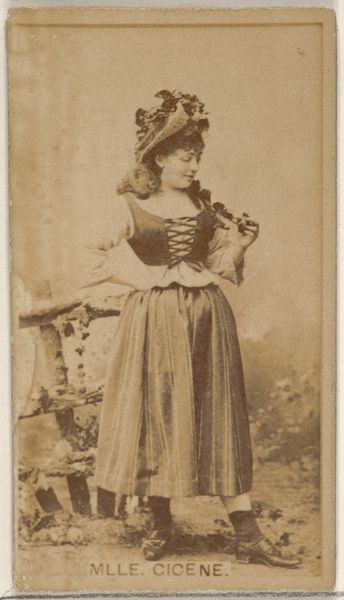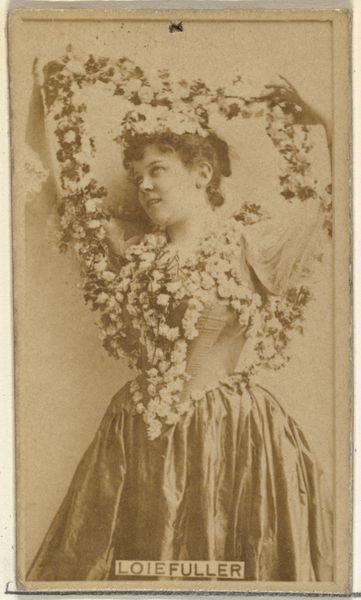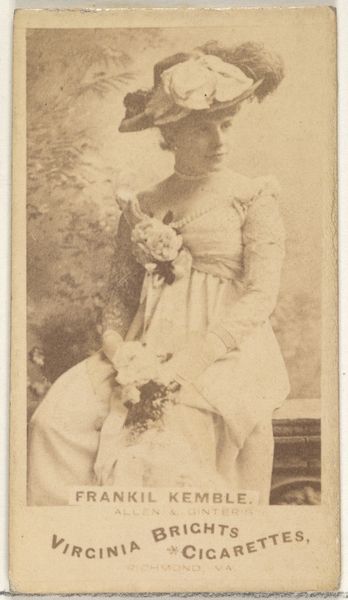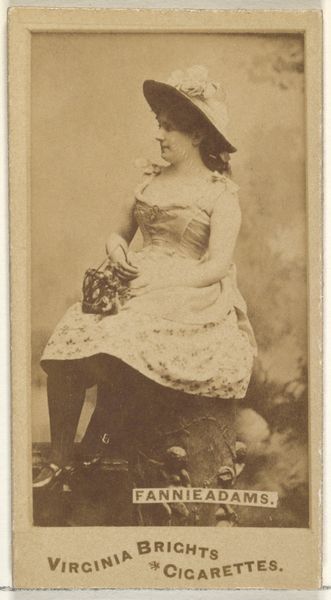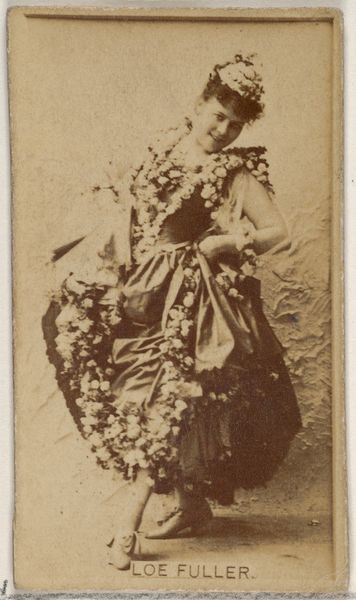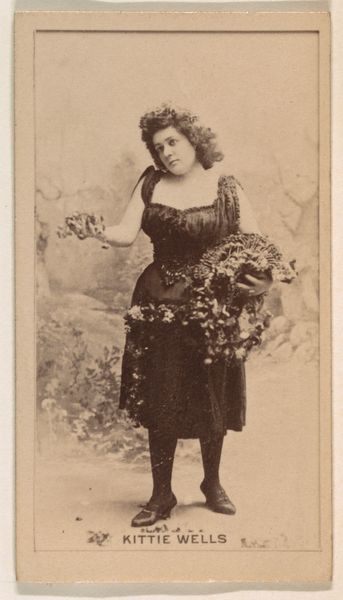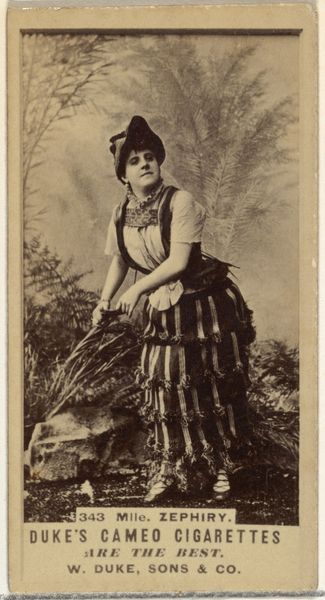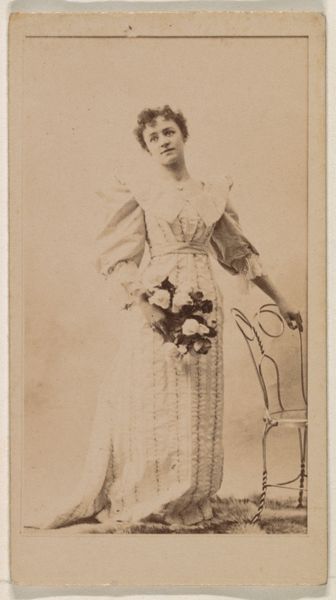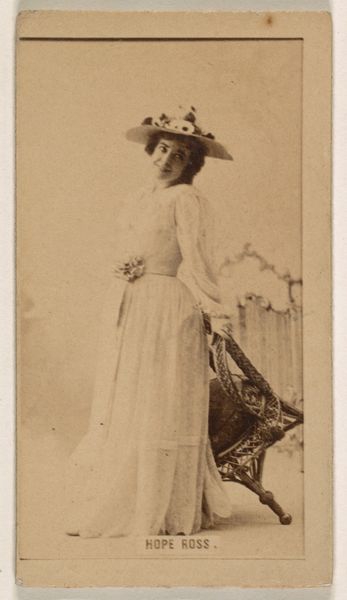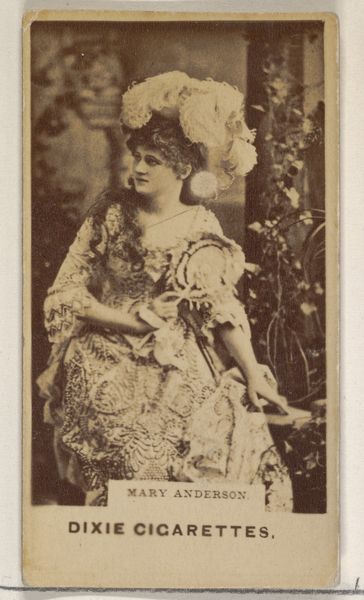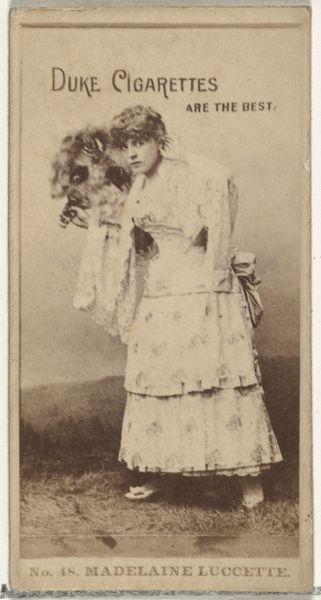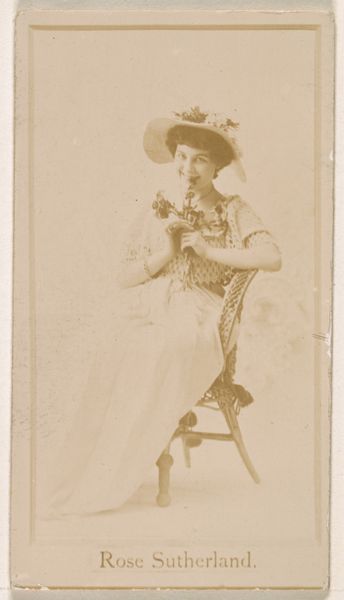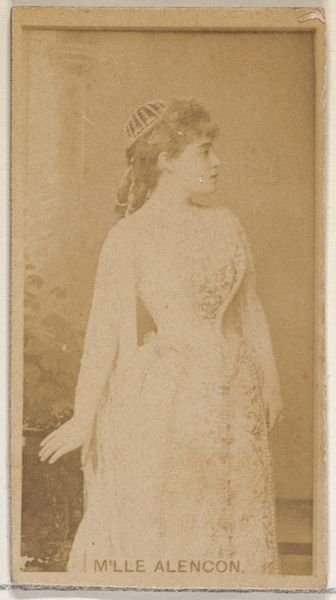
Mlle. Coe, from the Actors and Actresses series (N45, Type 8) for Virginia Brights Cigarettes 1885 - 1891
0:00
0:00
drawing, print, photography
#
portrait
#
drawing
#
16_19th-century
# print
#
photography
#
19th century
Dimensions: Sheet: 2 5/8 x 1 1/2 in. (6.6 x 3.8 cm)
Copyright: Public Domain
Editor: So, this is a portrait of Mlle. Coe, part of the "Actors and Actresses" series from Allen & Ginter, dating roughly 1885 to 1891. It’s a sepia-toned print. What strikes me is how it almost feels like an idealized depiction, yet also so very posed. What’s your take? Curator: What I see is a carefully constructed image operating within a very specific socio-cultural landscape. Think about the rise of celebrity culture at the time and the commodification of images. This wasn’t just a portrait; it was part of a series distributed with Virginia Brights Cigarettes. It fed into a broader fascination with performers. Editor: So it's less about capturing the *real* person, and more about marketing an image, constructing fame? Curator: Precisely! And consider who had access to these images. Cigarettes weren't universally consumed; this was targeted toward a specific demographic. The very act of collecting these cards signified a certain level of engagement with consumer culture. Mlle. Coe isn’t just a performer, she becomes a collectible object, part of a social ritual. Who got to decide which performers made the cut, and why? Editor: That makes the flowers and the seemingly idyllic background feel less innocent, and more… strategic? Curator: Exactly! It plays into established tropes of femininity and beauty to sell a product and, implicitly, a lifestyle. Think of it in contrast to other kinds of portraiture circulating at the time. What kind of power dynamics are at play? It's less about Mlle. Coe, and more about what she *represents*. Editor: I never considered it that way. I was focusing on the artistry but now I see it more about consumerism. Curator: Indeed. And reflecting on how these types of images, although ephemeral at the time, became archived allows one to reassess who and what were valued historically.
Comments
No comments
Be the first to comment and join the conversation on the ultimate creative platform.
